You’ve probably heard the term ‘muscle imbalance’ being thrown around in pole class and wondered whether it matters to you. Well, whether you are a complete newb to pole or an established athlete, I’m here to tell you: yes, it does!
Muscle imbalances from pole training are as common as pairs of pleasers at a pole convention. Oooo alliteration!
And here’s why you need to be aware… muscle imbalances can put you at an increased risk of injury. They may well be the cause of that nagging pain you’ve been ignoring and they can impact our posture, mobility, flexibility and performance too.
It’s not just a pole thing either. Imbalances are common in all sports—basketball players have a dominant shooting side, golfers only swing one way. Tennis, baseball, hockey… they all involve predominant use of one side of the body.
In all of those sports, athletes usually incorporate specific imbalance-countering exercises into their training programmes to prevent injury and stay on top of their game.
Why should pole be any different? And before you ask, it’s not quite as simple as “just train both sides”…
Three common types of muscle imbalance in pole
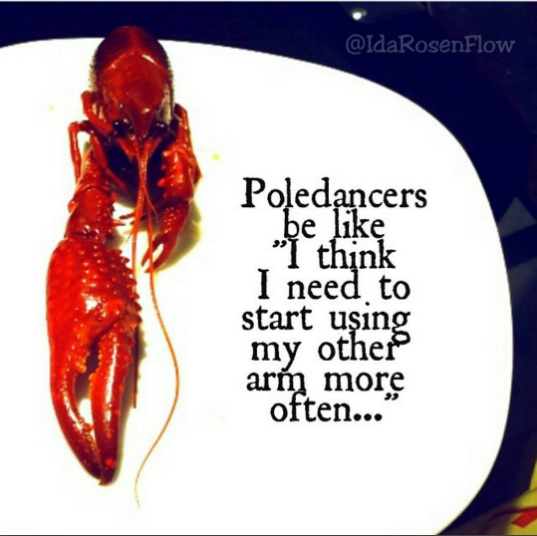
Who can relate? Love this pic from Idarosenflow (Insta: @idarosenflow)
A muscle imbalance can be either a difference in strength, size or mobility between different muscle groups.
In pole, when we refer to muscle imbalance, we’re usually talking about the tell-tale lobster arm look that comes from only practising your “good” side.
But there is another kind of muscle imbalance that is just as important for polers that may not be as immediately obvious as one Popeye forearm and one that’s a little more, erm, Olive Oyl.
A muscle imbalance can also be created if opposing muscle groups are not trained evenly. Most muscles/muscle groups in our body have an ‘antagonist’—an opposite muscle/muscle group: your bicep and your tricep; your quads and your hamstrings; your chest and your shoulders; your abs and your back muscles.
As one muscle tenses and shortens, the opposing muscle lengthens. Do a bicep curl. Oh g’wan, show me the gun show! Now think about what is happening – your bicep has tightened and shortened and your tricep has lengthened.
If a muscle is much stronger than its opposing muscle, this is where inefficient movement patterns can start to sneak in.
For example, if you trained chest all the time but did no upper back work, your pecs would likely become dominant and your back weaker in comparison.
 Over time, that imbalance might cause a rounding forwards of the shoulders as the pecs get stronger, tighter and overpower the upper back muscles.
Over time, that imbalance might cause a rounding forwards of the shoulders as the pecs get stronger, tighter and overpower the upper back muscles.
In fact, this ‘smart phone shoulder’ look is quite a common imbalance that can also be caused by sitting at a desk all day, or spending waaaay too much time looking down at your mobile phone. The shoulders tend to round forward, elongating the muscles across the shoulders and tightening the muscles of the chest.
Those strong pec muscles might also start to ‘take over’ in other movements where we might not want them to – for example, we might use them to create stability instead of our core or other stabilising muscles. Our body can do things like this without us even knowing about it!
It is a common muscle imbalance that can develop from pole training too, as we tend to repeat movement patterns like inverts and pull ups that repeatedly use the same muscle groups. And because many of us don’t engage and activate our back muscles as we should, we can end up under-using the lower traps, rhomboids and shoulder stabilising muscles. The tight chest causes the rhomboid muscle to lengthen, and training in that shoulder rounded position only serves to increase the pec tightness and reinforce that position.
There is also a third type of common muscle imbalance in pole: pole tends to be a very upper-body dominant sport, so the average poler’s lower body can sometimes be a little neglected, too. This is particularly important because along with shoulders and wrists, hamstring injuries are one of the most commonly injured areas for pole dancers, so it’s important that we don’t just stretch our hamstrings, but we also strengthen, too!
How to avoid muscle imbalances in pole
The lobster arm imbalance is the easy bit to avoid – we can just train both sides! And if you can’t do the move on your dork side, then at least do a variation. If you’re training your Ayesha and you can only do it on one side? No problem – do a butterfly/inverted D on the other. Can’t invert on one side? For every invert you do on your ‘nailed it’ side, do some invert prep work on the ‘workin’ on it’ side – crunches, floor inverts, inverts on a stability ball – it will eventually catch up!
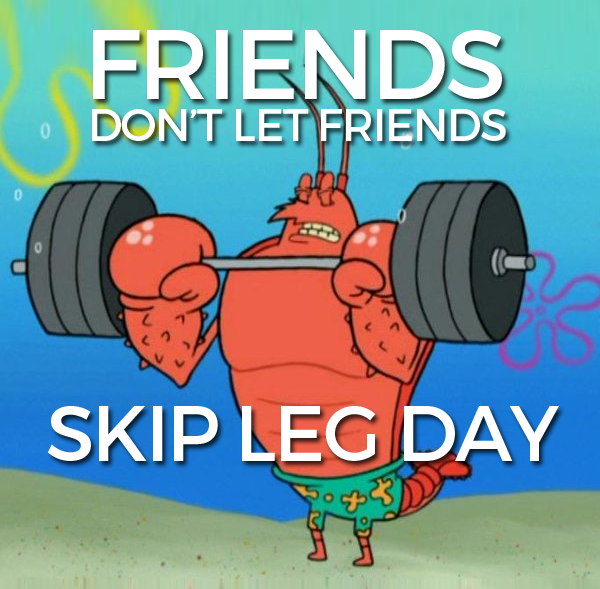 Obviously, if you’re training for a competition or performance you’re not going to start training your entire routine on your non-dominant side – that’d be a whole load of training volume on top of your performance training and not something that I’d advocate! In those situations, you will just need to give your ‘off the pole’ and pre-hab work a little extra attention to help you manage that during your performance prep.
Obviously, if you’re training for a competition or performance you’re not going to start training your entire routine on your non-dominant side – that’d be a whole load of training volume on top of your performance training and not something that I’d advocate! In those situations, you will just need to give your ‘off the pole’ and pre-hab work a little extra attention to help you manage that during your performance prep.
The imbalance between upper body and lower body is also relatively straight forward to fix and can be addressed by simply adding a leg day or building more leg work into your training programme. Glute work is important, polers! Never neglect the booty work!
Opposing muscle imbalance issues, however, are a bit trickier and depend on the individual athlete, the particular moves you are training, what training you do off the pole as well as other things like lifestyle, past injuries and posture.
As mentioned above, a common issue with pole athletes is over-use of the pecs and lats and under-use of the rhomboids, lower traps and other shoulder stabilising muscles. That particular muscle imbalance can be addressed with strength work for the rhomboids and lower traps, combined with foam rolling and mobility work to address the tight pecs and re-establish optimal movement mechanics.
It can also be a body-awareness issue, too! Ensuring you’re firing the small stabilising muscles and not just letting the bigger, stronger muscles take over will also help to ensure you are engaging your shoulders with proper scapula control. Training with isometric contractions, bands and pilates based moves can all help to address this!
Finally, another common imbalance we see in pole dancers is between the amount of pushing and pulling we do on the pole. Spins, climbs, inverts, holding ourselves up the pole – all involve a vertical pull of some kind. Depending on the sort of moves you tend to repeat in your training, we generally tend to do a helluva lotta vertical pulling in pole, and it’s good to balance that out with some vertical pressing, too, to work the opposing muscle groups. You can find about more about pushing v pulling in pole in my other blogs: Push ups for pole dancers and Balancing the vertical pull in pole.
Think about your own training programme. Are you repeating the same movement patterns over and over without considering the impact this may be having on the muscles you aren’t training? A balanced programme will include exercises for those opposing muscle groups you might be neglecting.
I really hope this has helped to get you thinking about the importance of balance in your pole training. Like all athletes, pole dancers must train the whole body for balanced strength which will make for a safer poler and a better performer. This usually requires supplementing your pole training with off-the pole exercises in the gym—ooo that’s my speciality! 🙂
If you’d like to geek out more with me on muscle balancing for pole and want to know what specific exercises to add to your training to implement this mysterious ‘balance’ ting, check out my book – Strength and Conditioning for Pole – which is available now in hard copy or as a downloadable ebook. It contains everything you need to assess your own unique strength and flexibility so you can create a training programme for pole that is tailored specifically to you. Magic!


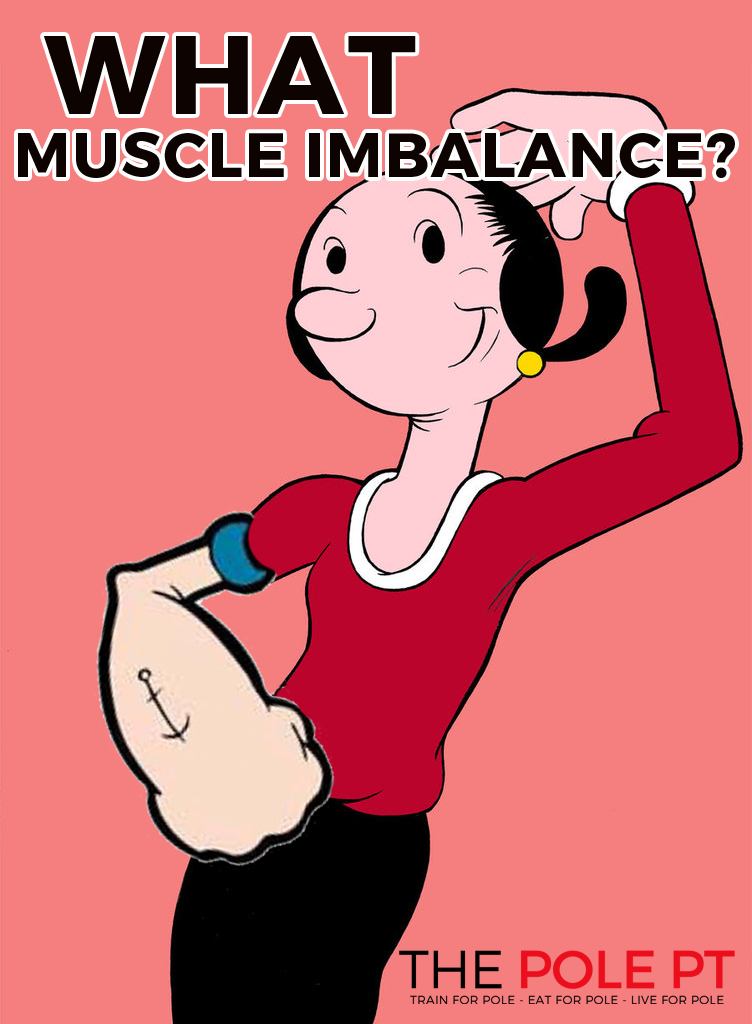


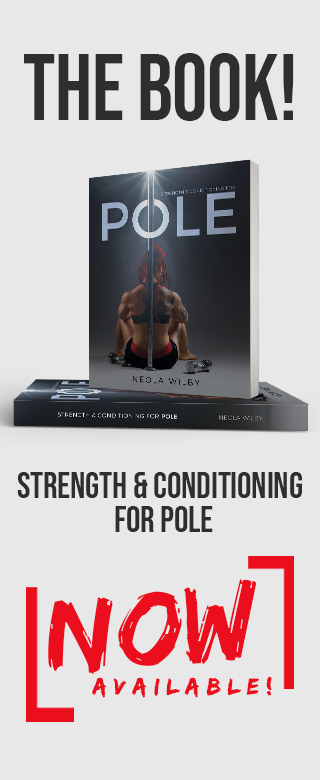
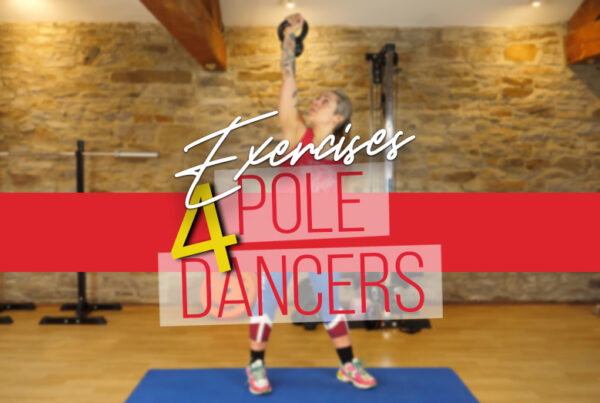
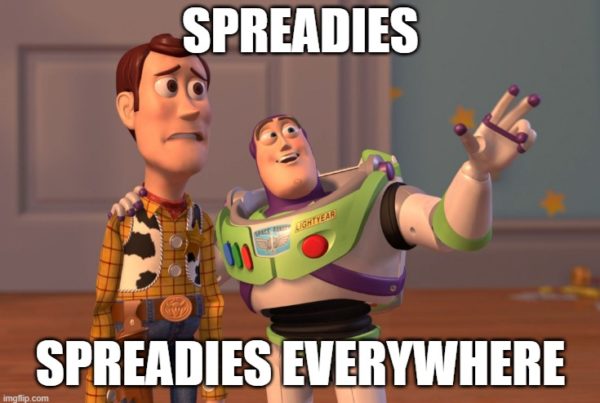
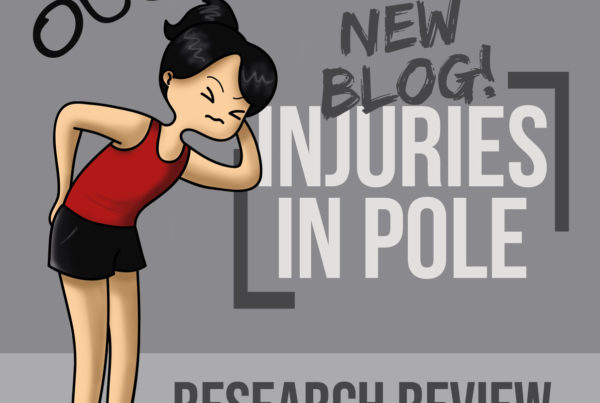
Love to see follow up articles about muscle imbalance and correction. I’ve been poling for a few months and despite attempting to work on both sides, the bicep of my dominant arm is definitely looking more buff than the other. I know I need to start adding gym time outside of pole, but when there is already some sort of imbalance going on, would working out both arms just continue the imbalance?
Hi Krystal. Thanks for your question and I’m sooo glad you’re already thinking about these kinds of things after only a few months of poling. It’s so important and will make you such a stronger poler in the long run. 🙂
There are a few different ways you can deal with muscle imbalances like this in the gym, including adding extra sets or reps in for your weaker side, or using different weights for each arm to even out the strength/size imbalance.
My favourite method is basically to do exercises using dumbbells (so the arms are working unilaterally) and using a weight that is challenging for your weaker side but not challenging your stronger side. This way, you are overloading the weaker side (so it will grow and get stronger) but you are just maintaining the stronger side where it’s at. Eventually, when your weaker side catches up, you can start to increase the weights and challenge both sides again. Hope that makes sense!
On the pole, try doing two on your weaker side for every one you do on your dominant side. I know what usually happens in class or in training is you spend ages trying to get a spin or trick on your ‘good’ side, then the other side ends up as an afterthought where you just do one attempt, it feels dreadful and you go right back to your ‘good’ side again. Training that dodgy side is just something you have to be really strict with yourself on! xx
Aha! Thank you so much–such a good idea/approach! I hadn’t even considered training both sides with varied weights but it makes sense. Thanks again!
Also, I have recently started to transition to vegan + fish (a recommended diet for people with Multiple Sclerosis, such as myself) so I would be keen to see any tips on eating for pole that aren’t animal centered.
Loving the blog! ????
Thank you! 🙂 Okay, vegan recipes – I’m on it!
Hi neo I am very confused when it comes to ( bracket grip) not sure if that’s what u call it but when my arm is lengthened over head reaching for the pole U say ur shoulder needs to be able to rotate upwards,( relating it to a handstand) which when I’m in my handstand I’m retracting my shoulders to stabilize and drawing them towards each other so when I’m in this climb am I retracting with a elevated shoulder all my teachers tell me u want ur shoulder down and hugging in so ugh I’m confused and in the pole pt book u say shoulders down and back is the wrong cueing so what would be the right cueing in a few simple words? Am I retracting depressing ugh I’m just so confused I feel like I’m depressing too much and then not enough sometimes and because I’m so confused I have injured my left shoulder and I have all these knots over it and I’ve created nerve damage I was wondering if u can help me put this confusion at rest I love your book so much tho and it has helped me so much,ur so strong and beautiful thank u for sharing ur knowledge and geeking out 😉💕☺️
Hi Emma, I’m so sorry for the delayed reply to your comment. Ah, I know it can be so confusing with so many different cues being thrown at you! I’ve actually just done a few posts on shoulder engagement and the difference between pushing overhead (handstand) and pulling (climbs etc) which goes into this in a lot more detail and why that ‘down and back cue’ doesn’t work for everyone. In the third part, I give some exercises that you can use to try and understand how this feels. Here is the link so you can find out more: https://www.thepolept.com/shoulder-health/engage-your-shoulders-what-does-shoulder-engagement-look-and-feel-like-on-the-pole/ I hope you are seeing a physio about your shoulder, too – they should be able to help with this as well if you can explain to them what you do on the pole and how best to engage. They should be able to work with you to help you figure out exactly which cues work best for YOU! What works for one person doesn’t always work for the next and if you’re having pain and trouble with your shoulder, it’s always best to get some personalised and hands-on advice. 🙂 x